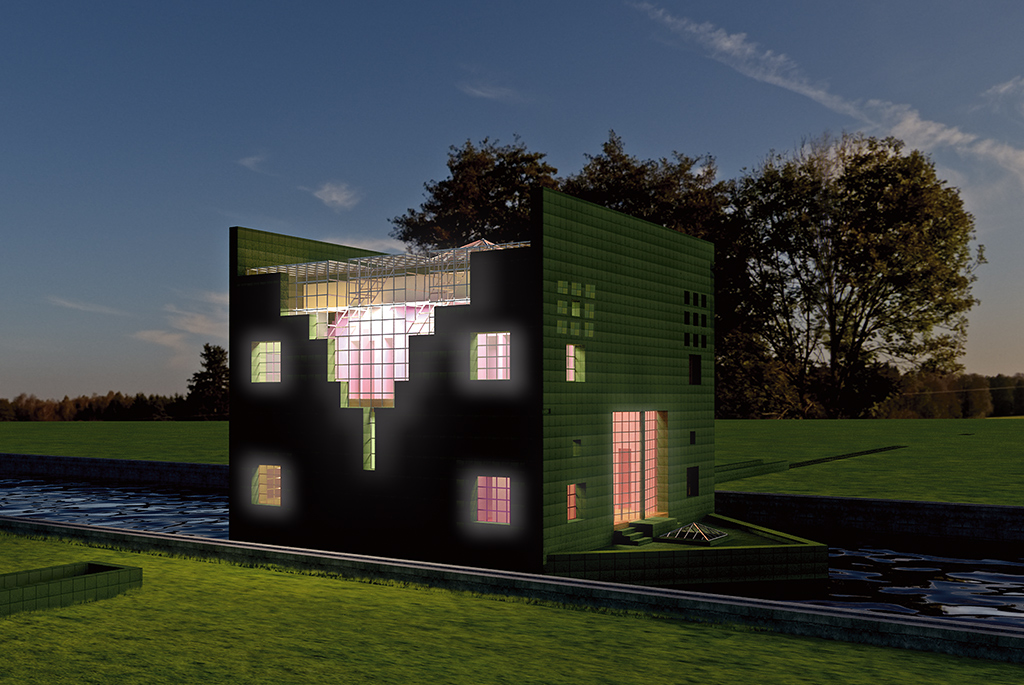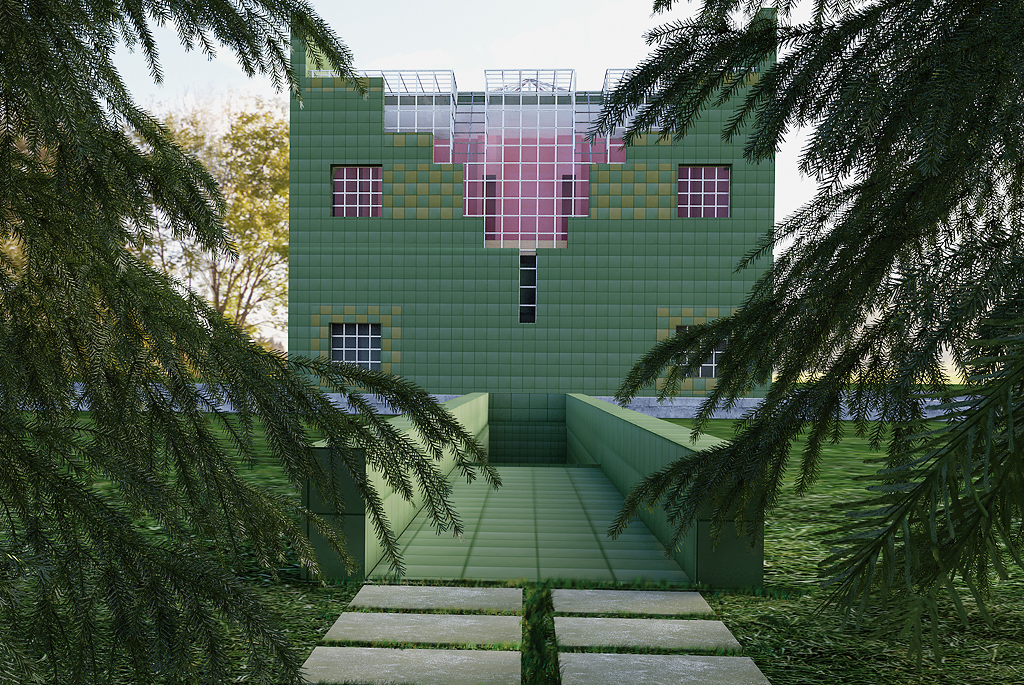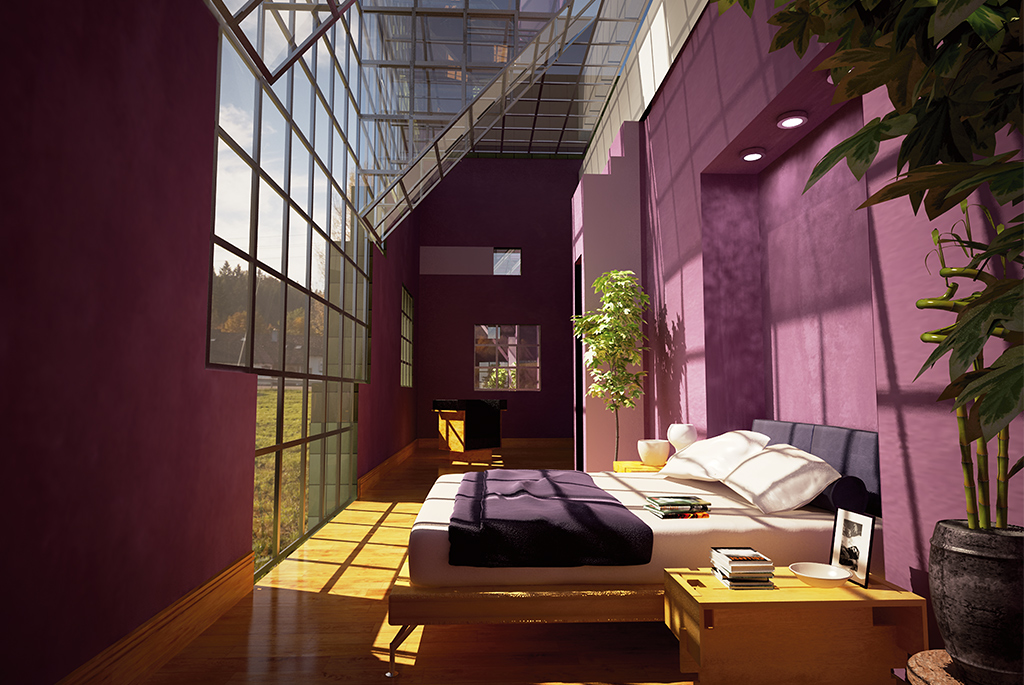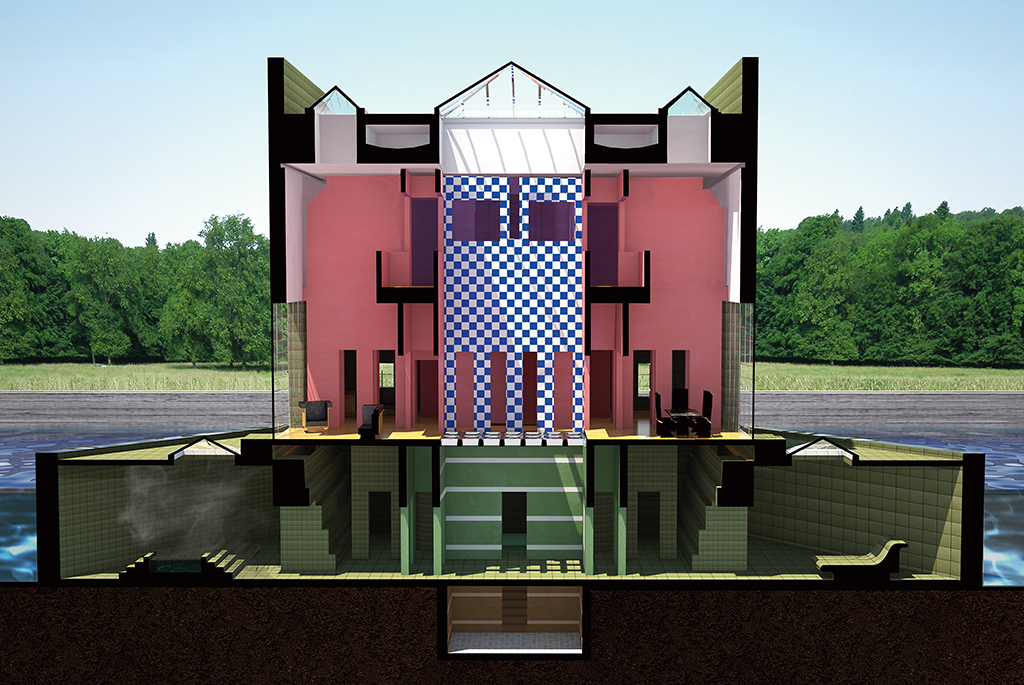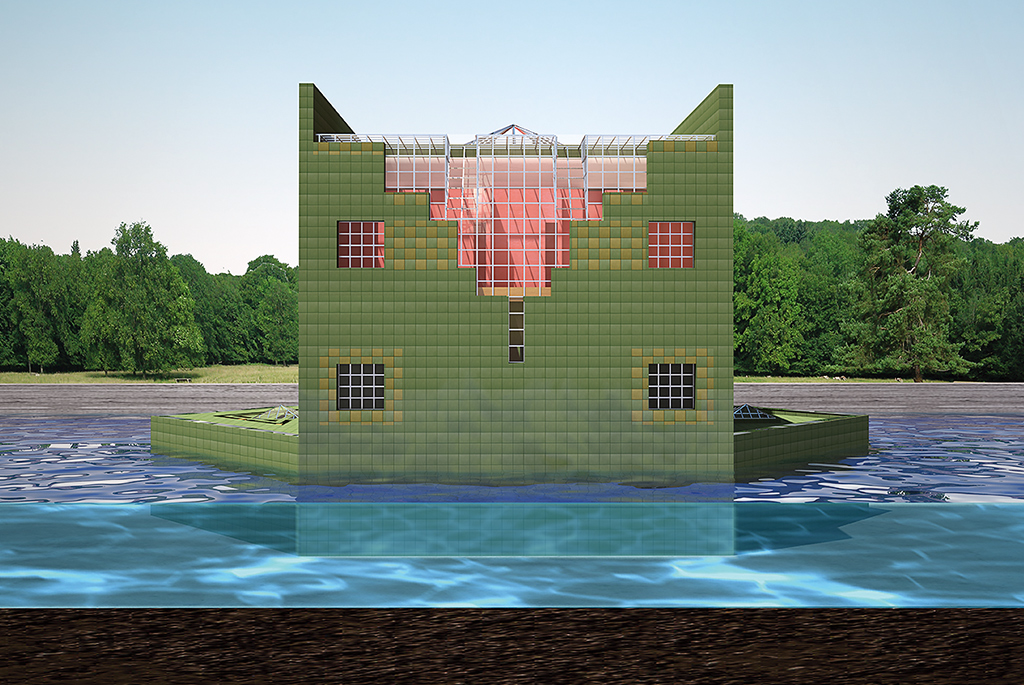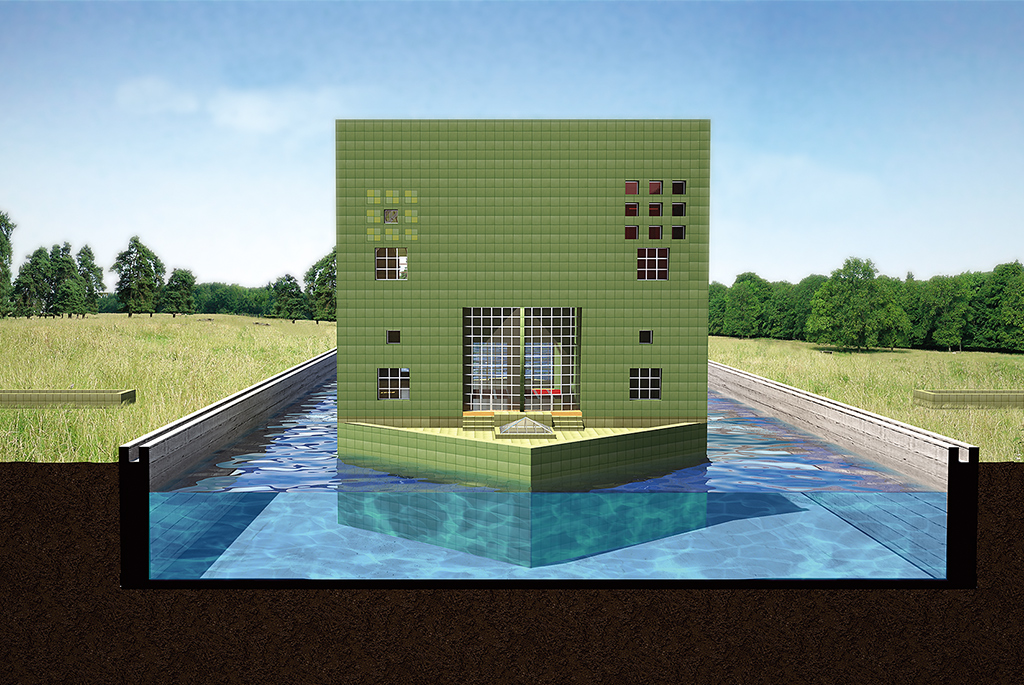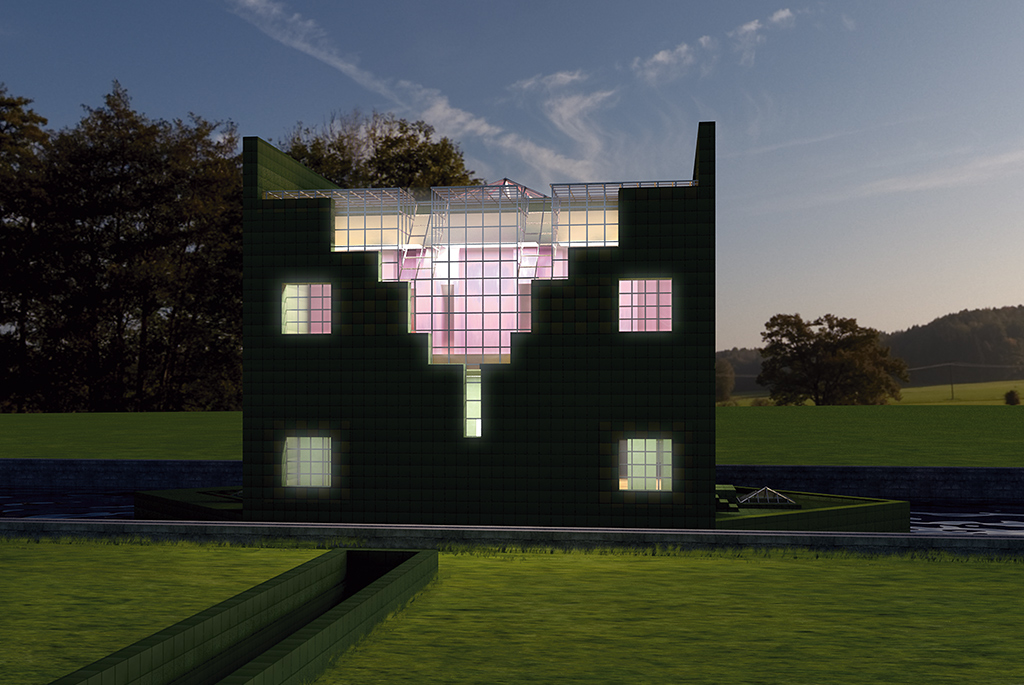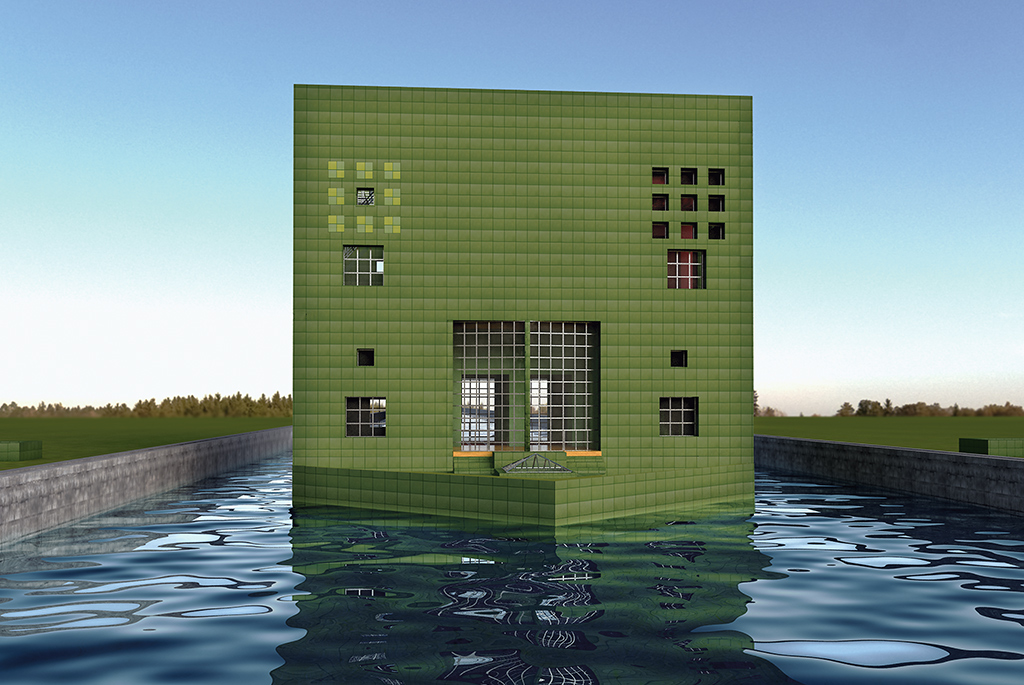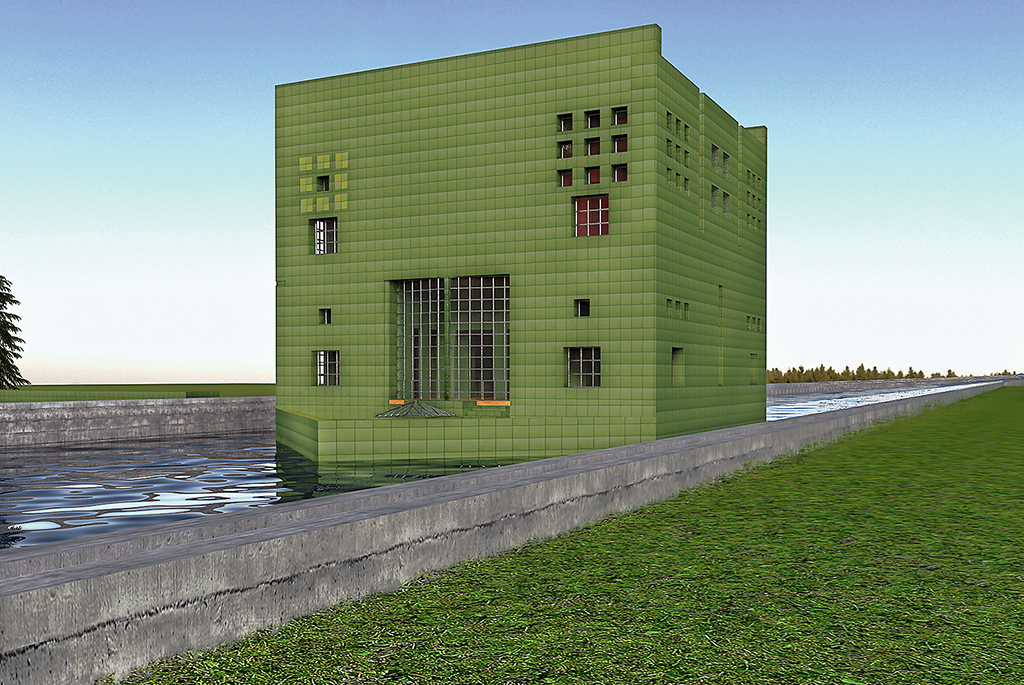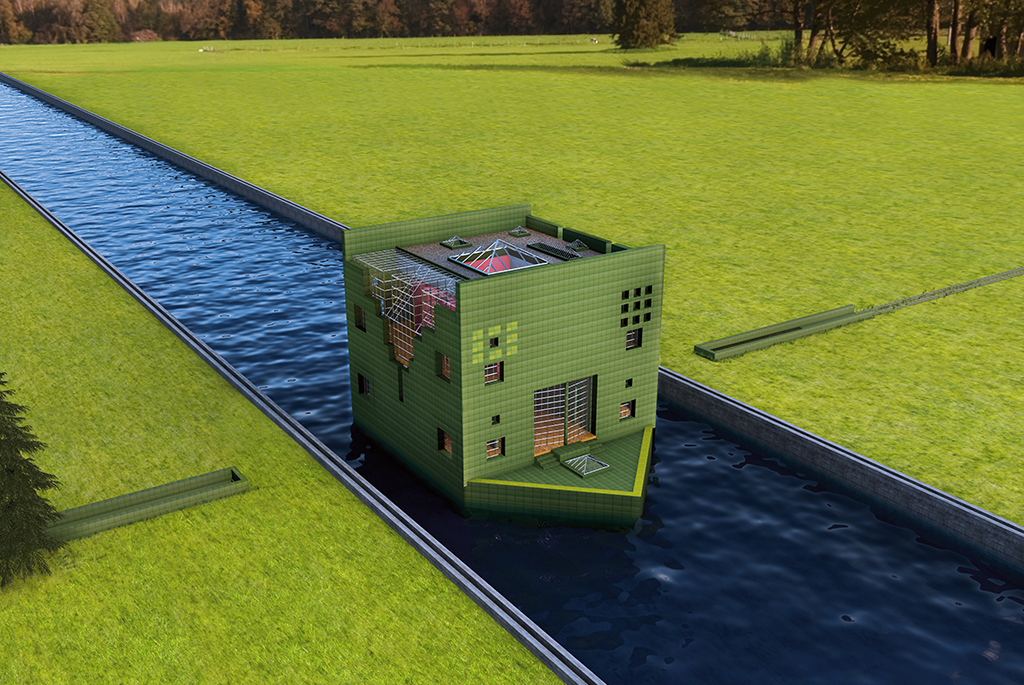Canal House
Project : Canal House
Location : Stratford, Connecticut
Firm : George Ranalli Architect
Associates: Silman Engineers
After a decade of continuous motion across the world’s stage, a world-class entertainer and natural born vagabond longed for home. To complicate matters, the public could not get enough of the icon. In a sense, George Ranalli Architect was tasked with the challenge of holding back the sea. The specific request was made for a contemporary architectural dwelling, both idyllically tranquil, though neither nostalgic nor humdrum, and a touch psychedelic.
The vast site spread across a velvety green. By providence, natural and civic resources allowed for the diversion of water from a river nearby, through a large manmade canal, before returning to its source, creating an illusory setting that brought into play a sloping underground passageway, embedded in the landscape, at cross-axis with the canal, and a house, as well as several smaller buildings, set into the succulent countryside. Viewed from above, the way in appears to dissolve. Passage underground leads to a main entrance, up through the foundation of the house, anchored to a concrete base in the canal.
The house is a cubic composition of stone, glass, and steel. Fifteen feet below grade, light enters through a glass ceiling to clarify the central entrance. The space orchestrates the way into a temperate, top-lit home spa. From there, an 18-foot high courtyard rises up through the center of the house, orienting spaces for a drawing room, dining, kitchen, bedrooms, and a library. Flights of stairs, at front-and-back, arrange passageways throughout three distinct levels. From the subterranean, the courtyard directs occupants to the drawing room, on one end, and the dining room, on the other, and each opens onto a large triangular-shaped terrace. The slow drift of sunlight and soft air moves through large faceted doors, and also through operable pyramids of glass on the rooftop, down through the atrium space, to refresh surrounding spaces. All the while, light continuously changes to various architectural effects. On the upper levels, vertical and lateral openings delineate a main architectural characteristic of the space. The dense stone exterior begins to lighten as the building rises. The step-gable pattern of a top of the house – the inverse of the shape of a traditional canal house, and it becomes a device for greater transparency on the southern side.
